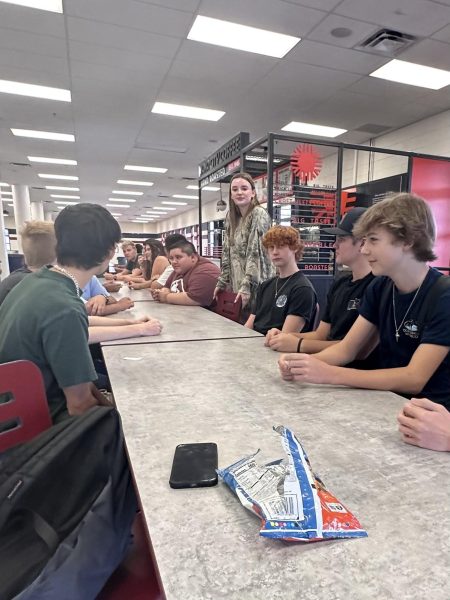Minute with Mia: Dress code dialogue needs to change
Let me get one thing straight: this is not another story complaining about why we have a dress code. Having a dress code is necessary to maintain a certain level of professionalism at school. That is understandable and in most cases, preferred. According to many teachers, the problem lies with dress coding females. However, when that code is being enforced like a weapon, it is no longer serving its purpose.
When Mary Beth Tinker and her black armband protested the Vietnam War in the late 1960s, the Supreme Court established that students “do not shed their constitutional freedom of speech at the schoolhouse gates.” However in the 1988 Hazelwood ruling, the Court ruled that students’ subject to a lower first amendment rights status, thus creating a gray area.
According to Principal Dan Serrano, there is no policy set in stone that explains how dress code should be enforced. Some teachers will send students up to the office to avoid conflict, some call in different teachers to confront the students, and then there are the few teachers who will take the opportunity to trade in their role as teacher for nagging grandmother.
It is not the fact that girls are being dress coded that is bothersome; it is the blatant disrespect they are treated that turns a simple rule violation, into a personal attack. Dress coding a student should be a private affair involving the teacher and the individual who is violating the code.
For example, senior McKenna Jones was walking to her first hour when she was stopped by a teacher on campus. The teacher told her she was out of dress code, but did not stop there. According to Jones, the teacher continued scolding her while she searched her bag for a different shirt. The teacher asked questions about how she could even considering leaving the house in a shirt like this.
After Jones told the teacher her shirt was in her locker, the teacher continued shouting the same belittling question at her from across the courtyard.
“I understand that it is appropriate we have a dress code,” Jones says. “But the way teachers approach the situation is wrong.”
Time and time again it is not the actual code that girls feel attacked by, but rather the words that are used in the process. Senior Lauren Hammers has both been a target and witnessed these interactions. “Sometimes [the things they say are] unnecessary and humiliating for girls. Especially when it’s in front of the class, the teacher has to call you out in front of everyone,” Hammers says. “If you’re going to make us change our clothes, you could do it in a respectful way.”
The dress code is not the problem. Fashion is not limited to school, and opportunities to express yourself can be found over break or on the weekends. But if a girl is to dress out of code, there is no need to resort to judgemental and hostile rhetoric to inform her of this infraction.

Mia Irvin is a senior at Perry and this is her fourth year in newspaper. She will be be the Editor-in-Chief for the 2017-18 year. When she is...




